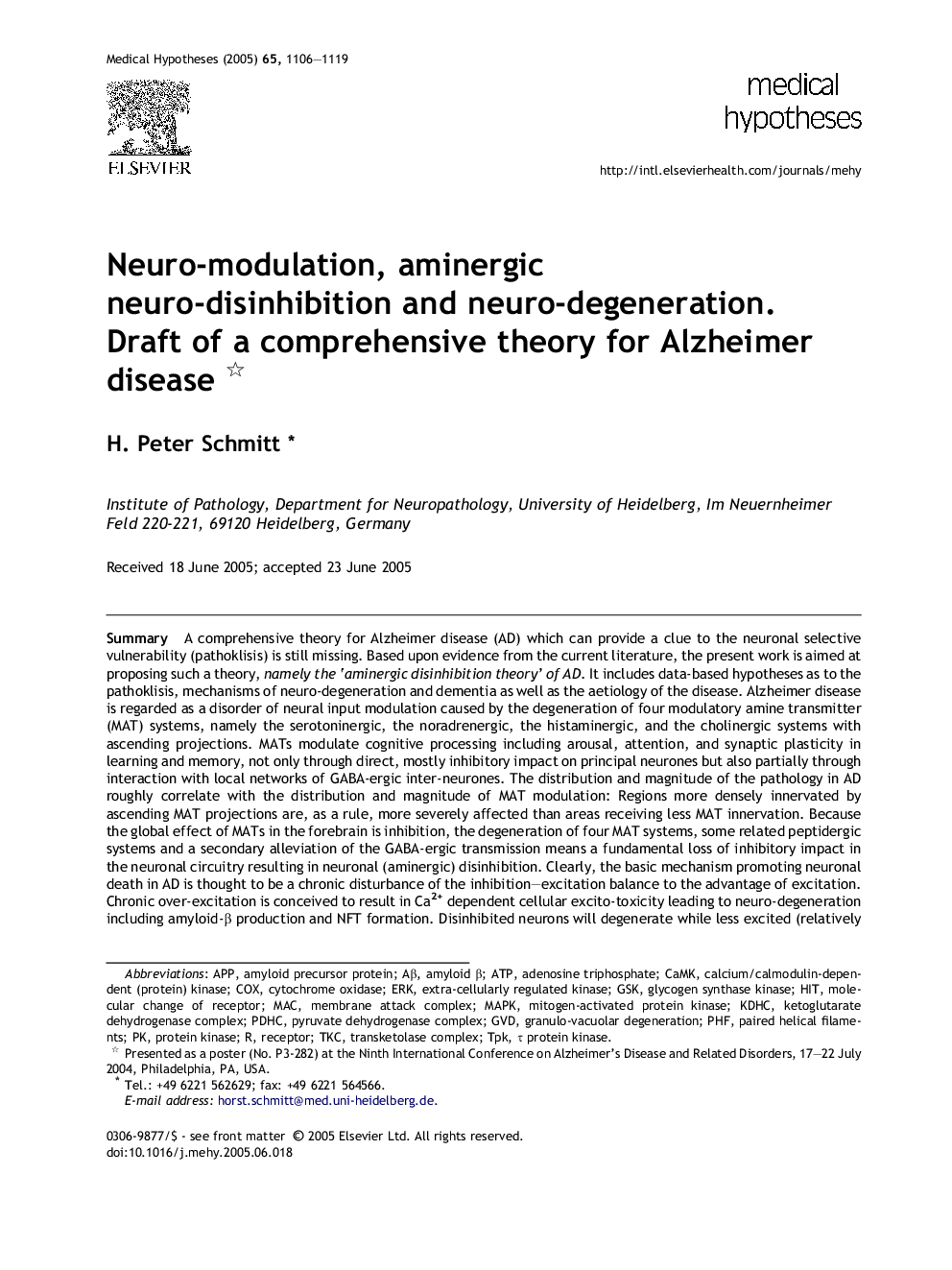| کد مقاله | کد نشریه | سال انتشار | مقاله انگلیسی | نسخه تمام متن |
|---|---|---|---|---|
| 8996477 | 1115134 | 2005 | 14 صفحه PDF | دانلود رایگان |
عنوان انگلیسی مقاله ISI
Neuro-modulation, aminergic neuro-disinhibition and neuro-degeneration.
دانلود مقاله + سفارش ترجمه
دانلود مقاله ISI انگلیسی
رایگان برای ایرانیان
کلمات کلیدی
COXTPKAβERKPDHcAPPGVDPHFCaMKGSKMAPK - MAPKAdenosine Triphosphate - آدنوزین تری فسفاتATP - آدنوزین تری فسفات یا ATPamyloid β - آمیلوئید βHIT - اصابتPaired helical filaments - رشته های مارپیچ دوزی شدهcytochrome oxidase - سیتوکروم اکسیدازMAC - مکamyloid precursor protein - پروتئین پیش ماده آمیلوئیProtein kinase - پروتئین کینازmitogen-activated protein kinase - پروتئین کیناز فعال با mitogenpyruvate dehydrogenase complex - پیرووات دهیدروژناز پیچیدهmembrane attack complex - پیچیده حمله غشاءglycogen synthase kinase - گلیکوزین سیتستاز کینازReceptor - گیرنده
موضوعات مرتبط
علوم زیستی و بیوفناوری
بیوشیمی، ژنتیک و زیست شناسی مولکولی
زیست شناسی تکاملی
پیش نمایش صفحه اول مقاله

چکیده انگلیسی
A comprehensive theory for Alzheimer disease (AD) which can provide a clue to the neuronal selective vulnerability (pathoklisis) is still missing. Based upon evidence from the current literature, the present work is aimed at proposing such a theory, namely the 'aminergic disinhibition theory' of AD. It includes data-based hypotheses as to the pathoklisis, mechanisms of neuro-degeneration and dementia as well as the aetiology of the disease. Alzheimer disease is regarded as a disorder of neural input modulation caused by the degeneration of four modulatory amine transmitter (MAT) systems, namely the serotoninergic, the noradrenergic, the histaminergic, and the cholinergic systems with ascending projections. MATs modulate cognitive processing including arousal, attention, and synaptic plasticity in learning and memory, not only through direct, mostly inhibitory impact on principal neurones but also partially through interaction with local networks of GABA-ergic inter-neurones. The distribution and magnitude of the pathology in AD roughly correlate with the distribution and magnitude of MAT modulation: Regions more densely innervated by ascending MAT projections are, as a rule, more severely affected than areas receiving less MAT innervation. Because the global effect of MATs in the forebrain is inhibition, the degeneration of four MAT systems, some related peptidergic systems and a secondary alleviation of the GABA-ergic transmission means a fundamental loss of inhibitory impact in the neuronal circuitry resulting in neuronal (aminergic) disinhibition. Clearly, the basic mechanism promoting neuronal death in AD is thought to be a chronic disturbance of the inhibition-excitation balance to the advantage of excitation. Chronic over-excitation is conceived to result in Ca2+ dependent cellular excito-toxicity leading to neuro-degeneration including amyloid-β production and NFT formation. Disinhibited neurons will degenerate while less excited (relatively over-inhibited) neurones will survive. Because the decline of aminergic transmission in AD is likely to start at the receptor level, it is hypothesized that early impairment by a molecular 'hit' to an MAT receptor (or a group of receptors) initiates a pathogenetic cascade that develops in an avalanche-like manner. Based on experimental evidence from the literature, the 'hit' might be the attachment of a targeted pathogen like a small roaming amino acid sequence to the receptor(s), e.g., the serotoninergic 5-HT2A-R. Referential sequence analysis could be a means to identify such a small pathogen hidden in a large receptor molecule.
ناشر
Database: Elsevier - ScienceDirect (ساینس دایرکت)
Journal: Medical Hypotheses - Volume 65, Issue 6, 2005, Pages 1106-1119
Journal: Medical Hypotheses - Volume 65, Issue 6, 2005, Pages 1106-1119
نویسندگان
H. Peter Schmitt,